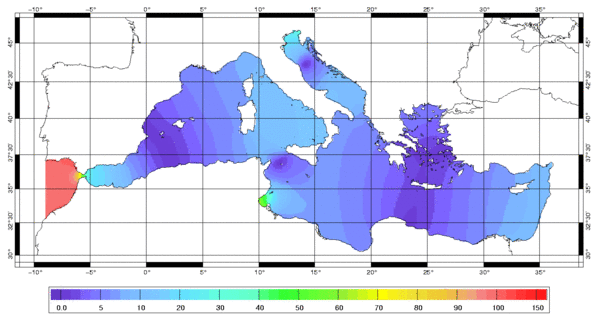Tides around the world
The amplitude, the tidal period and wave propagation that they cause are not homogeneous on the globe. These parameters vary from one place to another depending on complex parameters (bathymetry, geometry coastal, Coriolis forces).
The breakdown of tides into sinusoidal waves reveals that there are other different periods than the day and half day, for instance 6 hours. (wave M4). Depending on the areas, some of these waves have to be taken into account.
The main semi-diurnal component of the tide (wave M2), due to the Moon is dominant in the Atlantic Ocean, like in many regions. It may be observed that regions with an increase in tide variations or tidal range (difference in height between successive low and high tides) have significantly high values, in particular near the coasts on the North Atlantic. We can also see regions with very low amplitude, as well as points where the tidal range is nil, around which the tide 'turns'. The phase map is used to identify the direction and propagation speed of the wave phase which changes from 0° to 360° during its period (12 hours 25 minutes in the case of M2).
Link to video

Mediterranean tides are more than meets the eye
Most people associate the Mediterranean with small tides. However, this is not to say there are no tides at all. Indeed, they generate a mean variation of about 40 centimeters, but atmospheric conditions often hide the rise and fall in sea level. Headwinds or, more often, higher-than-normal atmospheric pressure attenuate the effect of these tides, sometimes making them virtually impossible to see.
However, for example, the Gulf of Gabes off the coast of Tunisia has a range of nearly two meters. In other areas, such as the Adriatic and south of Sicily, tides are very small in the vicinity of amphidromic points where the tidal range is zero. The Atlantic affects tides in the Strait of Gibraltar, but its influence soon declines further east.







